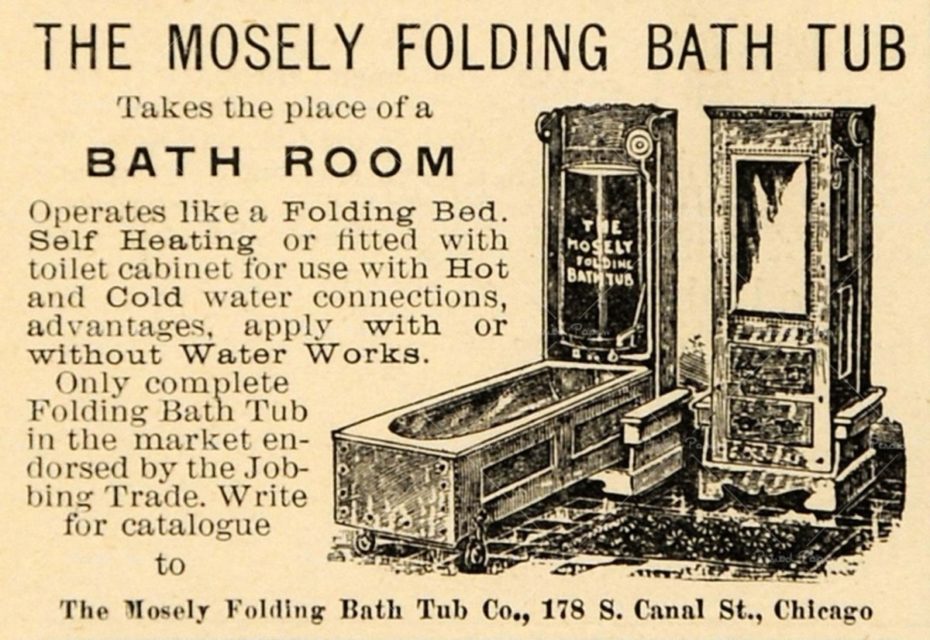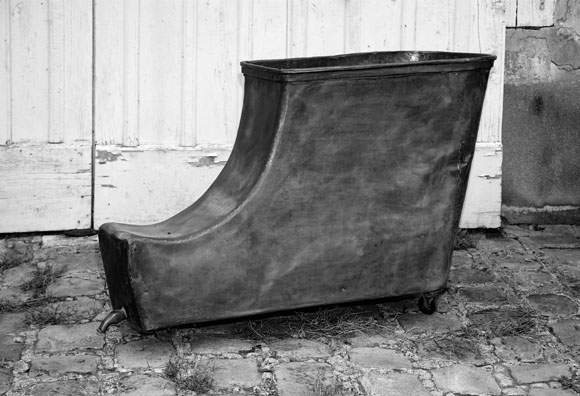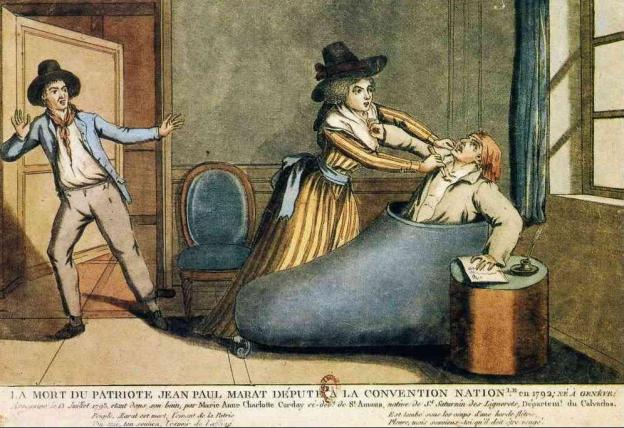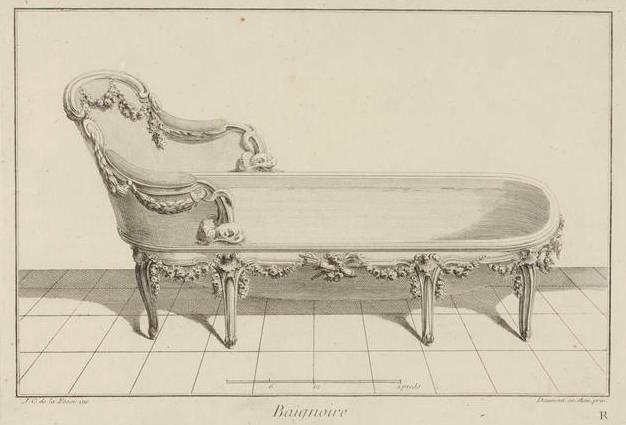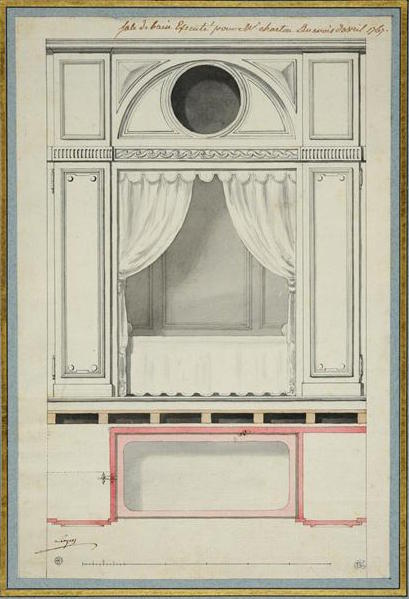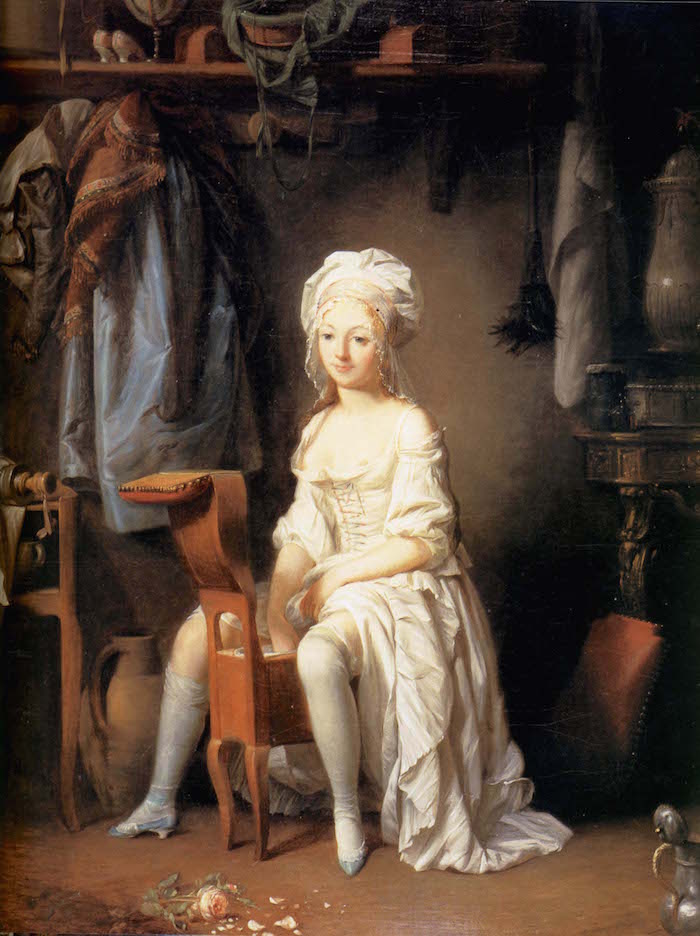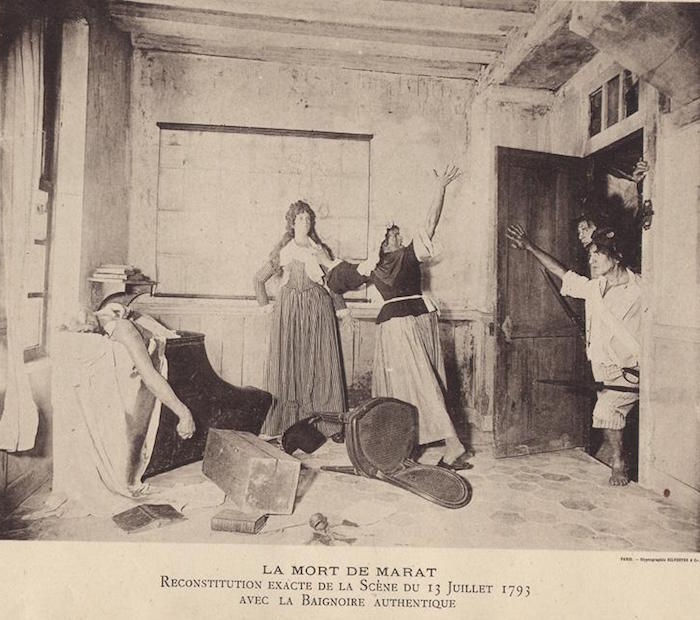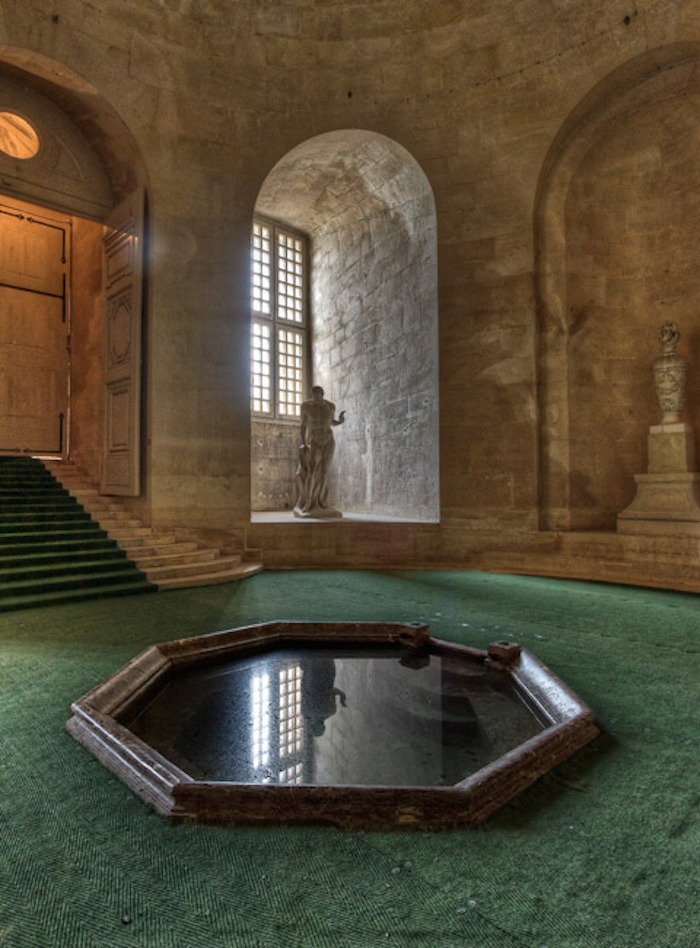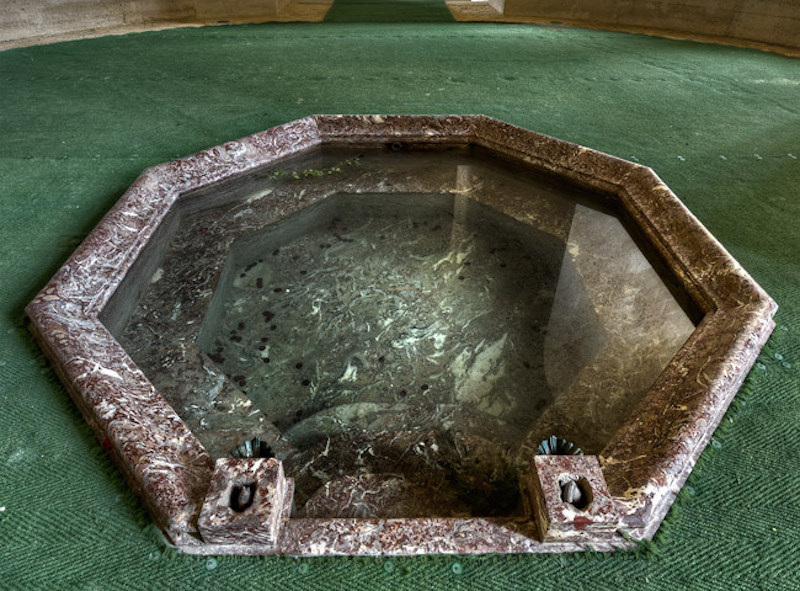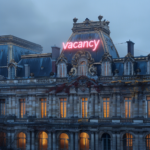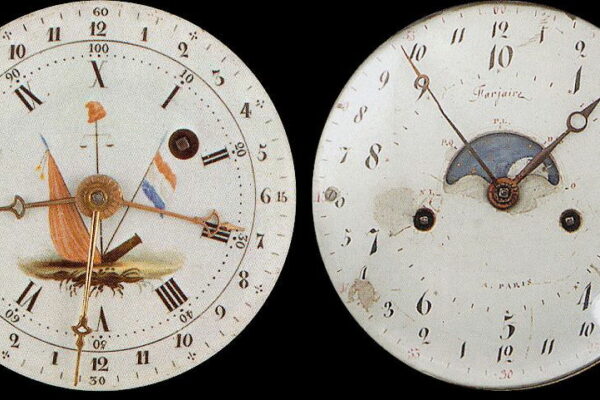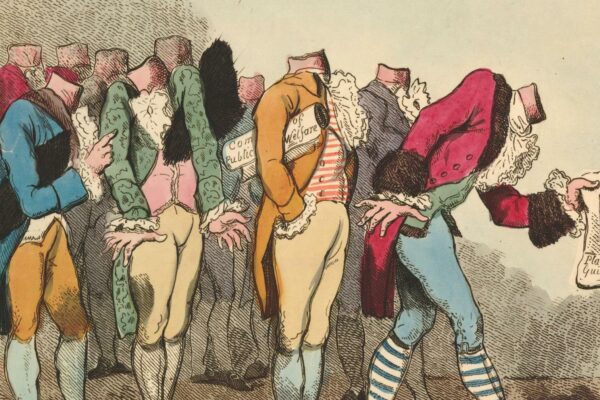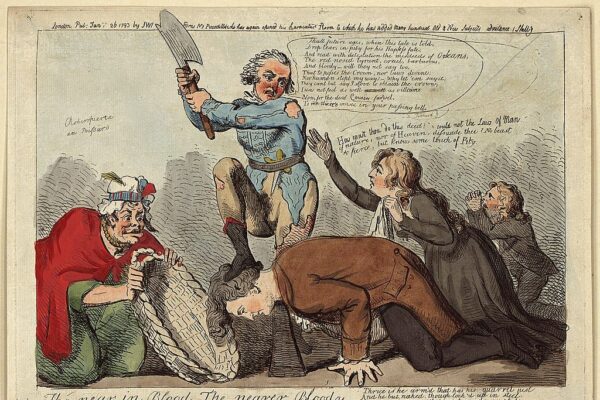We’ve taken a bath in front of the Eiffel Tower, in the middle of a desert, and even seen a bath tub on wheels. But for all our apparent interest in unconventional bathing, we’d never heard about Louis XIV’s luxurious perfume bath. In a ritual so over the top– even for the French Sun King– Louis would bathe in a rare marble basin filled only with a coveted citrus eau de parfum, extracted from his very own Orangery in Versailles. What’s more, the bath is still there, hiding right under our noses.
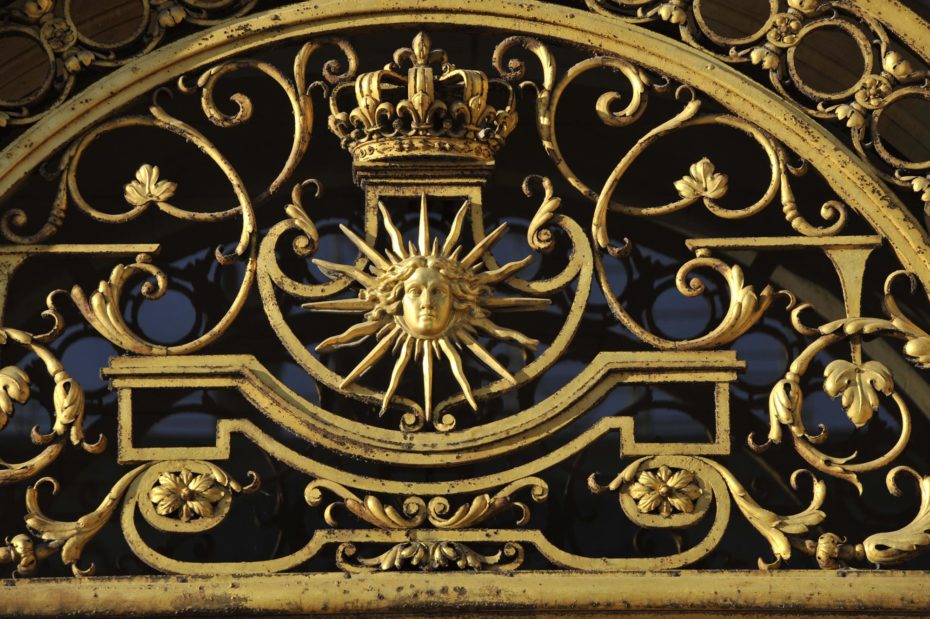
© Chateau de Versailles
Overshadowed by the glittering treasures of the world’s most royal household, the tour groups won’t go out of their way to find this fabled red bath, which tells a forgotten but fascinating anecdote in the palace’s history. And it’s been through quite the odyssey. Commissioned by Louis XIV in 1674, it was first installed in the storied “apartment of the baths”, a space covered in the rarest marble, outfitted with intricately carved basins, gold statues; an obscene show of wealth.
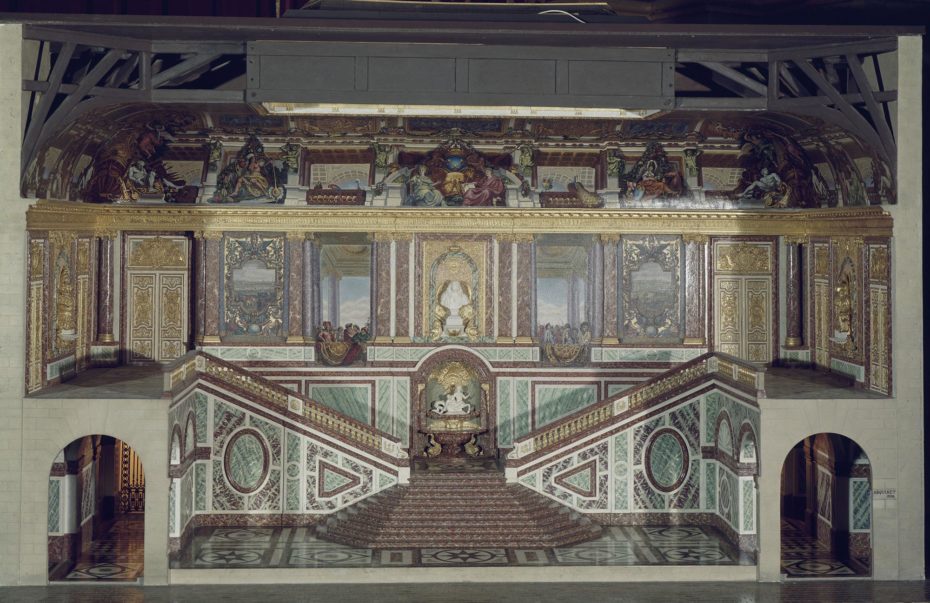
A model of the Sun King’s marble-clad Versailles, before it was demolished in 1754 during renovations of the royal apartments © Chateau de Versailles
At the same time, Louis was amassing the world’s largest collection of orange trees, sending emissaries all over Europe to bring back the finest specimens in order to create his favourite perfume. He built a garden cathedral for them, as big as the hall of mirrors, which housed all of his 2,000 trees during winter.

Orange trees, houses inside the Great Orangery © Chateau de Versailles
The king was crazy about the odeur de Nerolie, a floral essence produced from the blossom of the bitter orange tree, first introduced as a fashionable fragrance in the 17th century by an Italian princess, who was using it to perfume her gloves and bath. But Louis took it a step further by replacing his bath water entirely with the most delicate of fragrances. While Europe was trying to rid itself of the plague, bathing in natural water was considered a great risk. Paddling around in a pool of perfume was not only guaranteed to have him smelling like an orange blossom for his next appearance at court, but it was also just a safe bet in the dark ages of medicine. Today the essential oil is one of the most widely used floral oils in perfumery, but can you imagine bathing in the stuff?
According to historical receipts from the palace stonemasons, the 3 meter wide and 1 meter deep bath, “la vasque royale”, would have cost the modern day equivalent of $235,000. The entire bathroom, over $5 million.
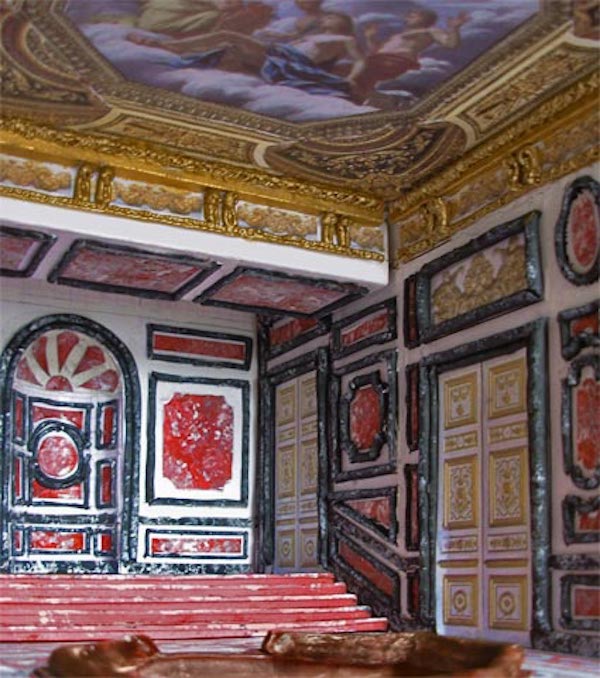
Model of the Sun King’s bathroom apartment
The bathing apartment at Versailles, in all its marble splendour, was demolished in the 18th century and replaced with wood panelling. Louis’ perfume bath was the only piece that was spared from this ornate wing of the palace. The octagonal bath was left in place and simply covered over with parquet floor, and for many years, lay buried beneath the bed of the Marquise de Montespan.
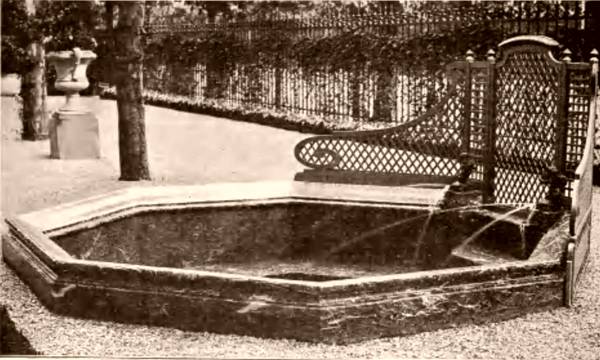
The bath at Madame Pompadour’s estate / source
In 1750, it was uncovered, uprooted and transported to the garden of Madame de Pompadour, where it was displayed as a pleasure pool in Fontainbleau…
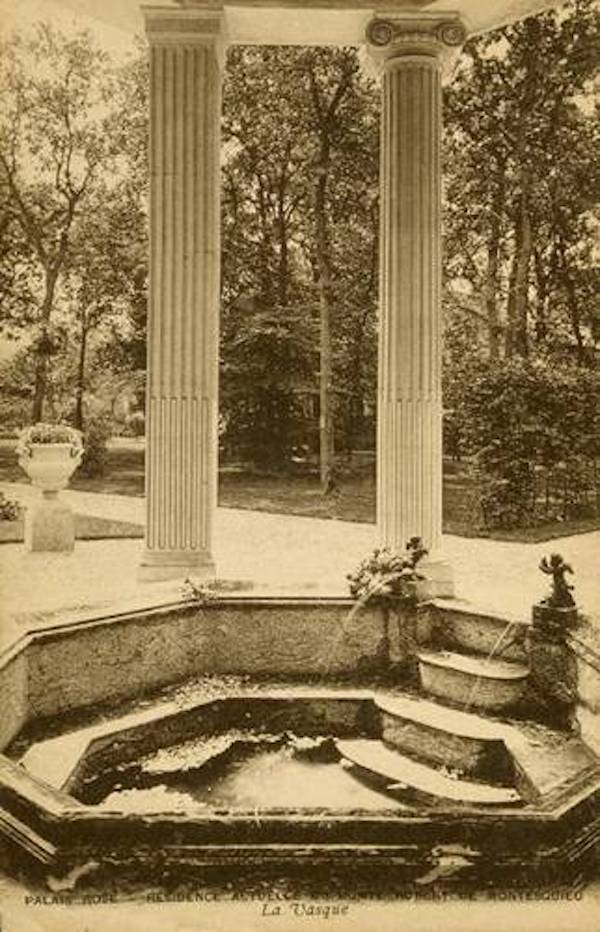
The bath tub at the Pink Palace / source
And somehow, it was later found at the home of a French poet in Neuilly in the west of Paris. “The Pink Palace” (Palais Rose), was built in 1899, a mansion appropriately inspired by the Grand Trianon in Versailles, also once lived in by the Marquise Luisa Casati (the original Lady Gaga).
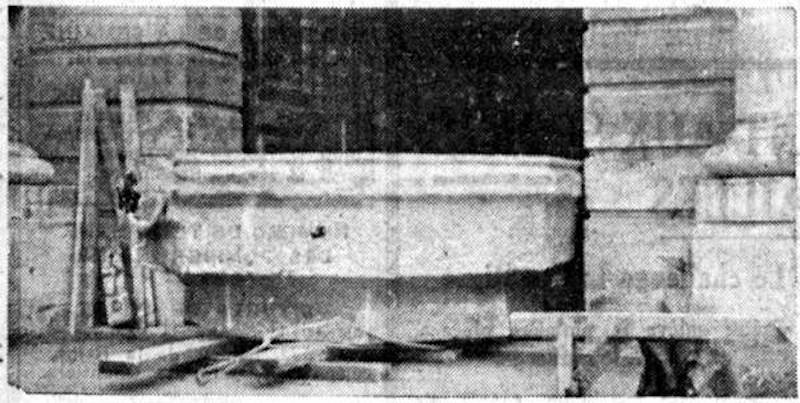
The royal vasque, being moved into the Orangery in the 1930s
In 1934, the curator of Versailles finally brought King Louis’ perfume bath home and placed it where it surely belongs, right inside the Great Orangery.
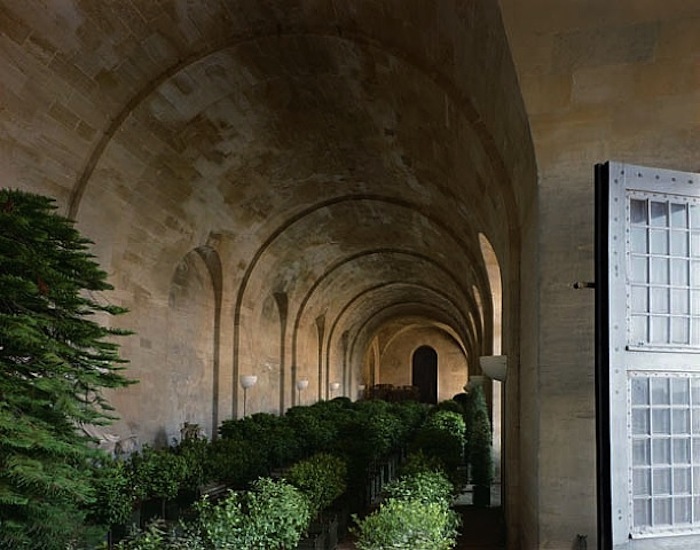
While this part of the palace is not open for the public to wander inside, the orangery is open for guided visits in the summer months, so if you want to see Versailles the off-beat way, take a look at this part of the chateau’s website come Spring.
The bath is sometimes mistaken by rookie tour guides as a royal paddle pool, but we’re pretty sure you’ll be one of the few people who’ll be able to recount this bath tub’s curious history.
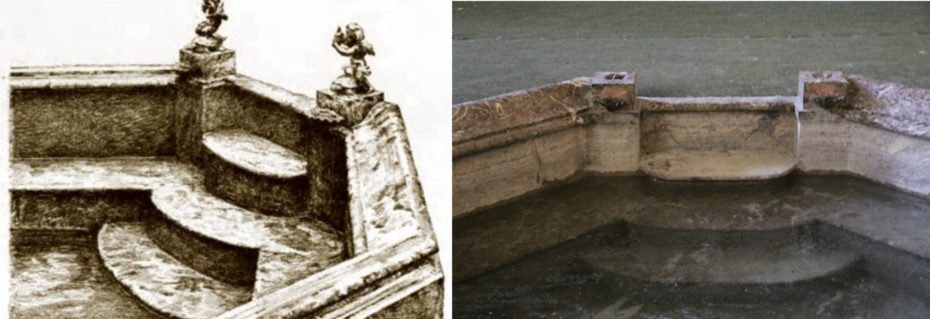
As it was left : The Sun King’s bath then & Now
On that note, I’ll leave you, but not before sharing some of other incredible bathtub imagery that cropped up during my research for this post. Now, where did I put my bubble bath…
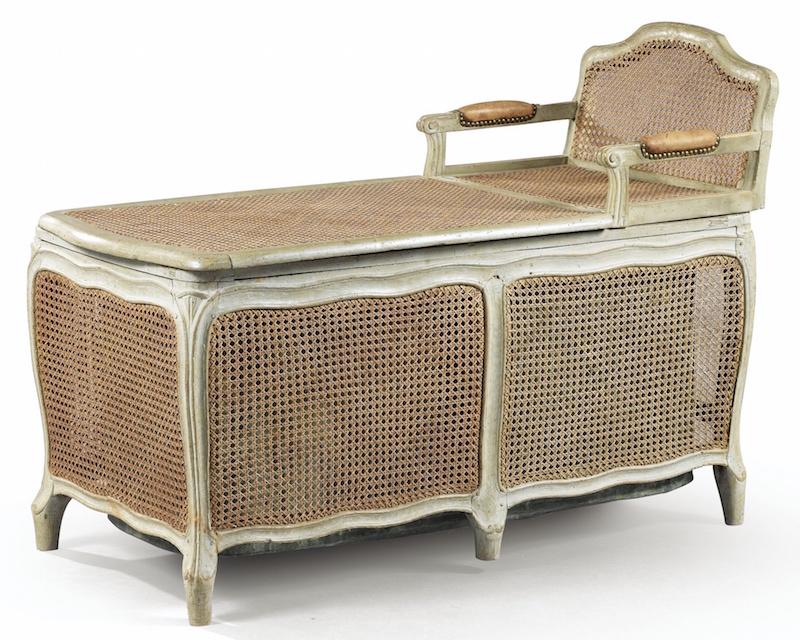
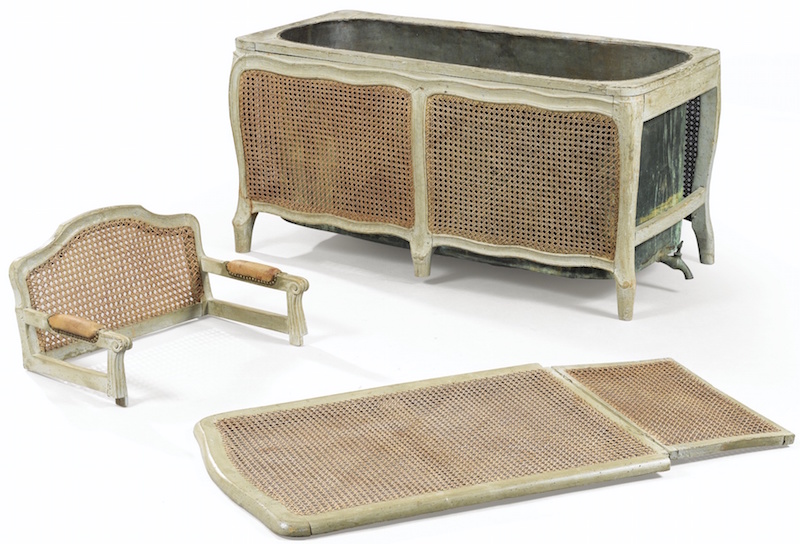
A Lacquered and caned bathtub, Louis XV, sold for 4375 euros at Sotheby’s.
